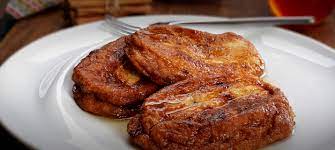Holy Week
Spanish cooking abounds with recipes typical to Semana Santa– Easter Week – when it is customary to abstain from eating any type of meat on Viernes Santo, Good Friday.
Spanish cooking abounds with recipes typical to Semana Santa– Easter Week – when it is customary to abstain from eating any type of meat on Viernes Santo, Good Friday. There are many regional and even personal variations for the vast range of dishes which appear at this time of year, generally based on fish with pulses and vegetables, and mouth-watering sugary desserts.
Here are a few of the most typical.
Sopa de ajo – garlic soup – is most typical in the North, and especially in Castilla y León. The basic ingredients are - apart from the obvious - oil, bread, water and eggs, with other flavourings added according to taste.
Sauté 4 cloves or more of garlic (sliced), and about 300g of cubed day-old bread in olive oil until the bread starts to look a little moist. Then add around 50g of chopped jamón serrano, if you’re using it (tocino, or pork fat, is often used instead in Spain.) A teaspoon of paprika and a drop of sherry may be added at this stage. Next, pour in a little over a litre of water or stock, add one or two bay leaves, and leave to simmer for 20 minutes.
Add one egg per person to poach in the liquid (don’t worry if they break up) and garnish with chopped parsley. Some transfer the soup to individual earthenware dishes before adding one egg per bowl.
Potaje de Vigilia – Chick peas with spinach and salt cod
There are so many different versions of this delicious hearty soup that we will limit ourselves to detailing its main ingredients: chick peas, salt cod, and spinach. The previously-soaked chick peas are cooked until tender in clean water, with flavourings including garlic, chopped onion and paprika sautéed together in olive oil added halfway through, together with bay leaves, carrots and leek for added flavouring. Some also add dried haricot beans to the pot.
Salt cod (soaked for 24 hours, with several changes of water) is then added, together with chopped up spinach. The cod can either be de-skinned and de-boned before adding to the pot, or after it is cooked and then flaked. Potatoes and chopped tomatoes are sometimes added.
The potaje is often served garnished with hard-boiled eggs chopped into quarters.

Torrijas - Photo www.spain.info
Torrijas
Again, there are a number of different ways of making this delicious dessert, similar to pain perdu or eggy bread.
Rounds cut from a stale barra (French stick or baguette) are soaked in either red wine, sherry or milk (the latter previously infused with a cinnamon stick). They are then dipped in beaten egg and shallow-fried in oil or butter on both sides.
The finishing touch, after removing from the pan, is either dipping them in a mixture of sugar and cinnamon, drizzling honey over the top, or they can be poured over with a syrup made from honey and water
